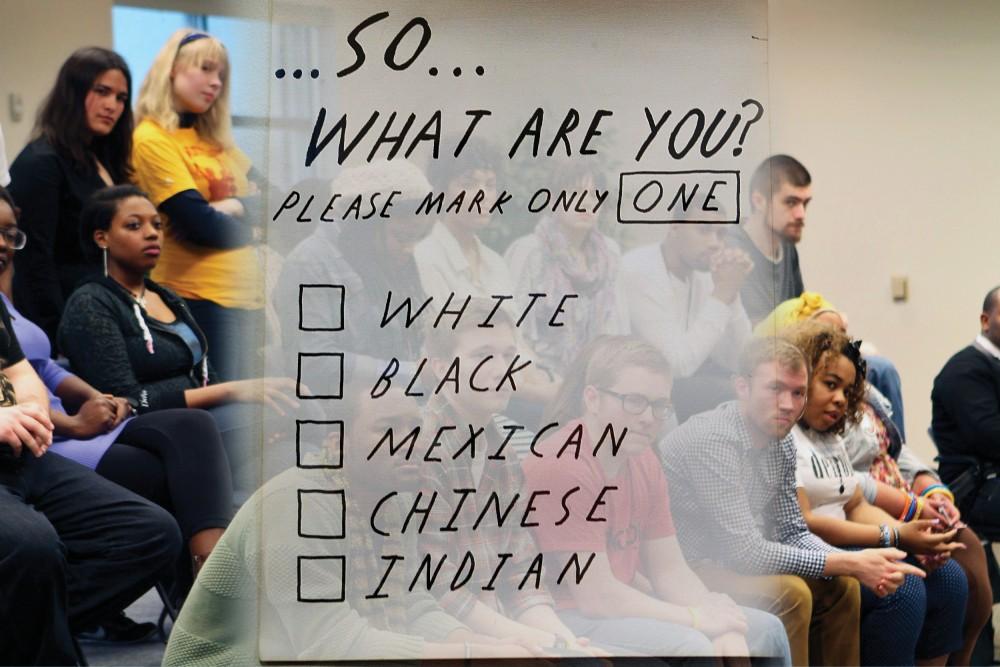Students’ performances challenge status quo

GVL/Gabriella Patti
Apr 6, 2014
Act on Racism, a group at Grand Valley State University, challenged the status quo during its winter performance on April 2.
Students performed skits, poetry and spoken word in order to explore the ways in which people experience prejudice, discrimination, racism and racial categorization.
“The purpose of our event is to promote dialogue pertaining to race,” said Amina Mohamed, a member of Act on Racism. “At a predominantly white institution like Grand Valley, we notice that many people shy away from talking about race and its effects around us.”
The program was first started in 2005 in response to a bias incident that occurred on campus. It started with about 12 students, and since then, it has grown immensely and has given students a new voice.
“I want students to come away from this knowing that they actually have a lot more power than they think they do,” said Jennifer Stewart, a sociology professor at GVSU and the founder of Act on Racism. “If Grand Valley students got together and established as their community that they don’t tolerate acts of racism, acts of sexism, acts of classism or acts of heterosexism, it would go a long way towards making it go away.”
The skits varied, and while some brought on tears, others produced a chuckle. Each highlighted topics such as the importance of diversity on college campuses. Stewart said this topic often comes up in her classes and she will ask her students if they think GVSU is diverse.
“About half raise their hands and say yes, and the other half say, ‘Have you lost your mind,’” Stewart said.
The performances were raw and honest, even going so far as to simulate situations that students have experienced at GVSU with one skit titled “The 50” and another that addressed segregation phenomena, which students have witnessed in the Kirkhof Center.
“Faculty and staff certainly play a role in this, but student culture dominates here and so I want students to learn that they have a lot more say in what our culture looks like,” Stewart said, adding that encouraging diversity on college campuses is vital, though it does not always go smoothly.
The performances addressed the notion of racial myths in the U.S. along with how families educate their children about racism. Many students come from segregated communities and can bring preconceived ideas to college.
“The first place that many experience the racial ‘other’ is in college,” Stewart said.
Prevailing mentalities and preconceived notions often stand in the way of students crossing manmade, racial boundaries.
“We are too busy fighting to work on something great,” said GVSU student Elaina Earl in her spoken word performance.
Ben Linsk, a junior at GVSU, has seen how being involved in Act on Racism has positively affected his outlook.
“In a lot of ways, it is bad to think in a colorblind mentality,” Linsk said. “I find myself thinking less and less about the topic of race when I talk to people, and more and more about the weather and what I saw on TV. To me, that is a beautiful thing.”
Stewart said she hopes to see all students benefit positively from the lessons learned through Act on Racism.
“There are so many benefits to interacting across these lines of race, class, gender and sexuality,” she said. “It makes you smarter. Isn’t that why we are here?”






















